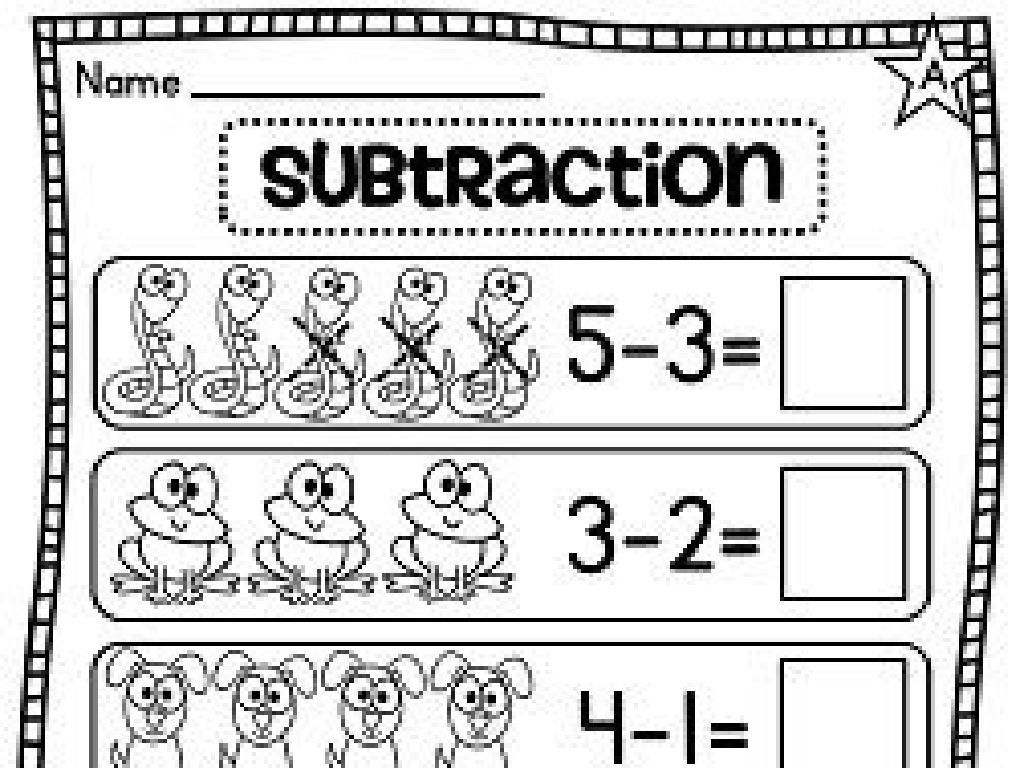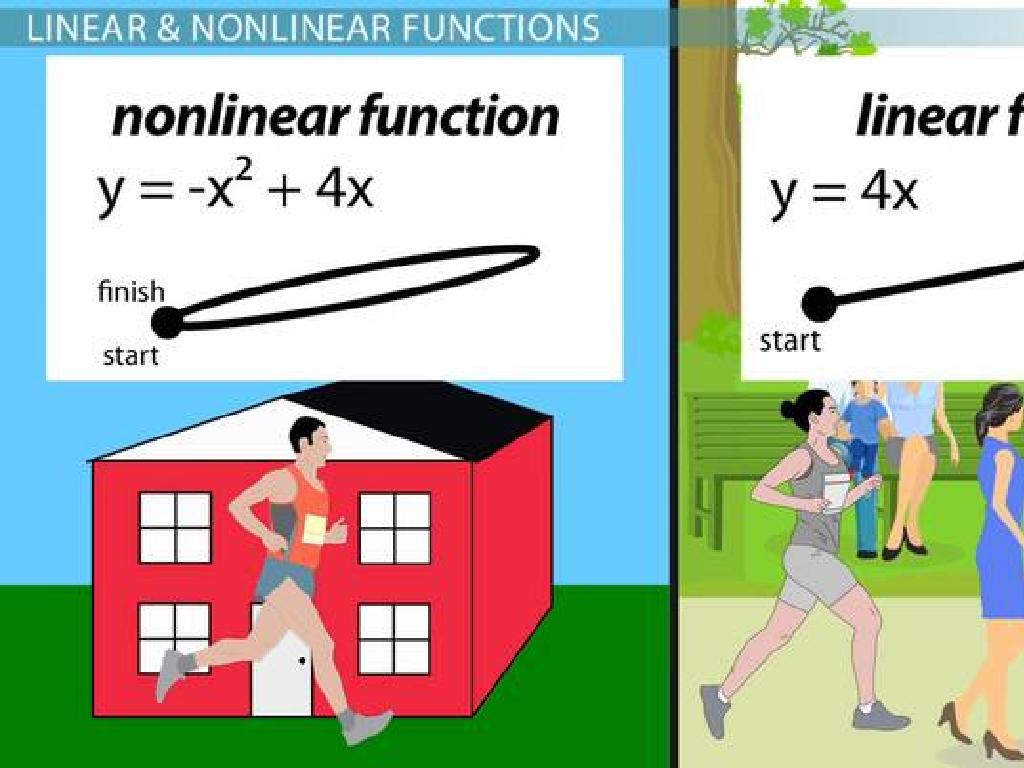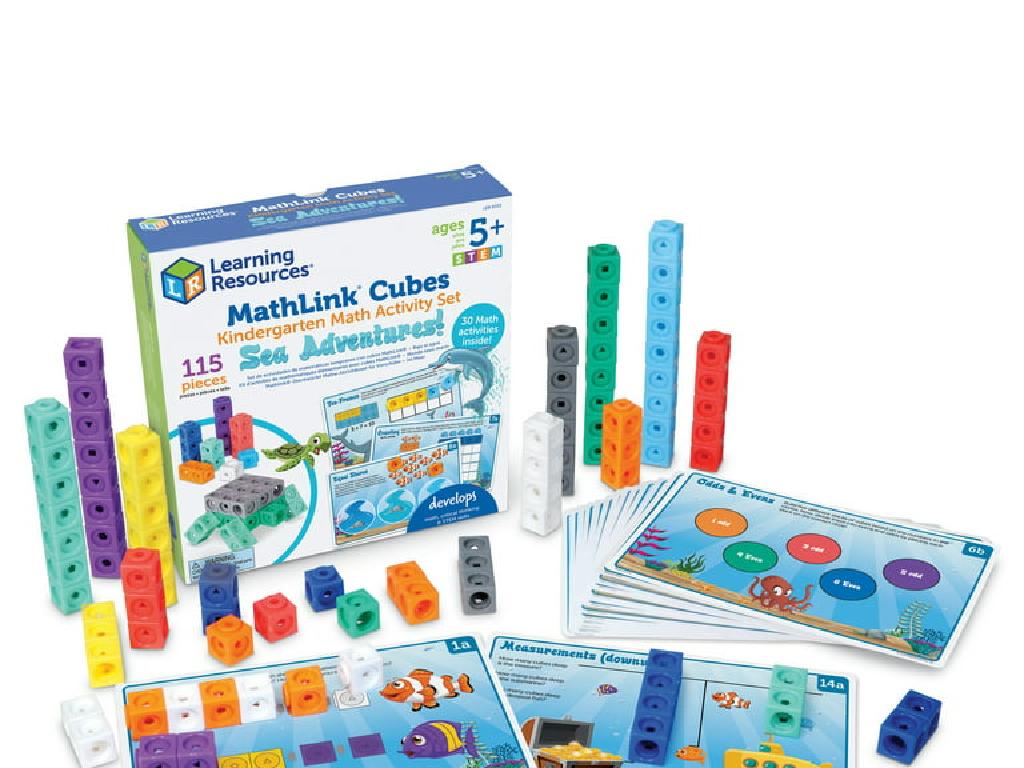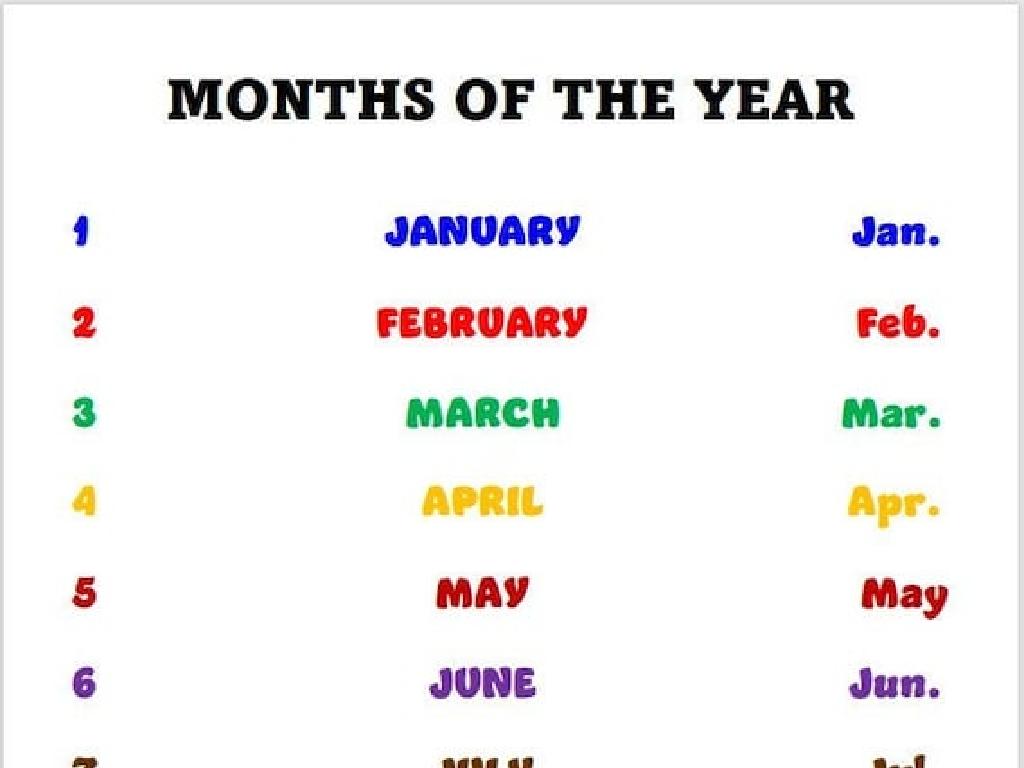Measure Using A Centimeter Ruler
Subject: Math
Grade: Second grade
Topic: Metric Units Of Length
Please LOG IN to download the presentation. Access is available to registered users only.
View More Content
Welcome to Metric Measurements!
– Learning to measure length
– Using a centimeter ruler
– A ruler marked with centimeters (cm)
– Measuring tells us length
– Is it long or short? Measure to find out!
– Practice with real objects
– Bring items from home to measure in class
|
This slide introduces second-grade students to the concept of measuring length using the metric system, specifically centimeters. Start by explaining that a centimeter is a unit of length in the metric system. Show them a centimeter ruler and point out the markings. Explain that measuring can help us find out how long or short an object is, which is very useful in everyday life. Encourage students to bring items from home that they can measure during the next class. This will give them hands-on experience and help solidify their understanding of using a centimeter ruler to measure length.
Understanding Centimeters
– Centimeter: a metric length unit
– A centimeter is a small unit of measurement in the metric system.
– Centimeters vs. Inches
– An inch is bigger; a centimeter is smaller.
– Centimeters in a Meter
– 100 centimeters make up one meter.
– Measuring with a Ruler
– Use the small marks on a ruler to measure centimeters.
|
This slide introduces the concept of a centimeter as a fundamental unit of length in the metric system, which is commonly used around the world. It’s important to help students visualize the size of a centimeter by comparing it to an inch, which they may be more familiar with. Emphasize that a centimeter is smaller than an inch. Highlight that there are 100 centimeters in a meter to give them an understanding of scale. Finally, demonstrate how to use a centimeter ruler by aligning the object at the zero mark and counting the small marks to measure its length. Provide rulers for hands-on practice and encourage students to measure objects around the classroom to reinforce the concept.
Measuring with a Centimeter Ruler
– Understand a centimeter ruler
– Each small mark represents one centimeter.
– Start measuring from zero
– Line up the object’s end
– Make sure the object’s end is at the 0 cm mark on the ruler.
– Read the length correctly
– Where the object ends, that number is its length.
|
This slide is aimed at teaching second-grade students how to properly use a centimeter ruler to measure objects. Emphasize that each small mark on the ruler represents one centimeter. Show them how to start measuring from the zero mark to ensure accuracy. It’s important for the students to understand that they must align one end of the object with the zero mark and not the edge of the ruler. Demonstrate how to read the ruler where the other end of the object stops to find the correct length. Provide rulers and various objects for students to practice measuring. Encourage them to check their measurements with a partner for accuracy.
Let’s Practice Measuring with a Centimeter Ruler!
– Measure classroom objects
– Use a ruler to find how long things are
– Start at the zero mark
– Always begin measuring from the end of the ruler where ‘0’ is
– Record lengths in centimeters
– Write the number that shows how many centimeters long it is
– Understand centimeter accuracy
– Make sure you look closely to see where the object ends on the ruler
|
This slide is for a class activity where students will practice measuring objects around the classroom using a centimeter ruler. It’s crucial to remind them to start at the zero mark on their rulers to get accurate measurements. They should write down the length of each object they measure in centimeters. This will help them understand the concept of length and the use of centimeters as a unit of measure. For the activity, consider providing a variety of objects to measure, such as pencils, books, erasers, and small toys. Encourage students to measure carefully and check their work. Possible activities could include measuring the same object with different rulers to understand consistency, comparing lengths of different objects, or even measuring parts of their own bodies like the length of their fingers or arms.
Comparing Lengths with a Ruler
– Measuring objects with a ruler
– Writing down the measurements
– Comparing lengths of objects
– Use the numbers to see which is longer or shorter
– Is the pencil longer than the eraser?
– Look at your measurements to decide
|
This slide is aimed at teaching students how to use a centimeter ruler to measure the length of different objects and then compare these lengths. Start by demonstrating how to measure an object by aligning the end of the object with the zero mark on the ruler. Emphasize the importance of writing down measurements to remember them. Then, show how to compare the lengths by looking at the numbers they’ve written down. For example, if a pencil measures 12 cm and an eraser measures 5 cm, the pencil is longer. Use real objects for this activity to make it interactive and engaging. Encourage students to ask questions and to measure and compare objects themselves.
Class Activity: Measure and Create!
– Receive paper strips for measuring
– Measure and cut strips with a ruler
Use the centimeter side of your ruler carefully
– Create a collage from your strips
Arrange your strips to make a fun design
– Label each strip with its length
Write the length on each strip to show how long it is
|
This hands-on activity is designed to help second-grade students practice measuring with a centimeter ruler. Distribute different colored paper strips to the students. Demonstrate how to align the edge of the ruler with the edge of the paper strip and measure accurately. Guide them to cut the strips at the measured length. Once they have a variety of strips, they can create a collage. Encourage creativity in their collage composition. After the collage is complete, have them label each strip with its correct length, reinforcing their understanding of centimeter measurement. Possible variations of the activity could include measuring classroom objects, comparing lengths of cut strips, or even trading strips to incorporate addition and subtraction of lengths.
Review: Measuring with Centimeter Rulers
– Understanding a centimeter
– A small unit of length in the metric system.
– Using a centimeter ruler
– Line up the object’s end with the zero mark.
– Share your measurements
– Did you measure a toy, a pencil, or your hand?
– Why measurement matters
|
This slide is meant to review the concept of measurement using a centimeter ruler. Begin by explaining that a centimeter is a small unit of length in the metric system, commonly used to measure objects that are not too long. Demonstrate the correct way to use a ruler, emphasizing the importance of starting at the zero mark to get an accurate measurement. Encourage students to share their experiences with measurement, discussing any interesting items they measured at home or in class. This reinforces the practical application of measurement in everyday life and helps students understand why it’s an essential skill. Provide examples and be ready to answer any questions the students might have about the process.






